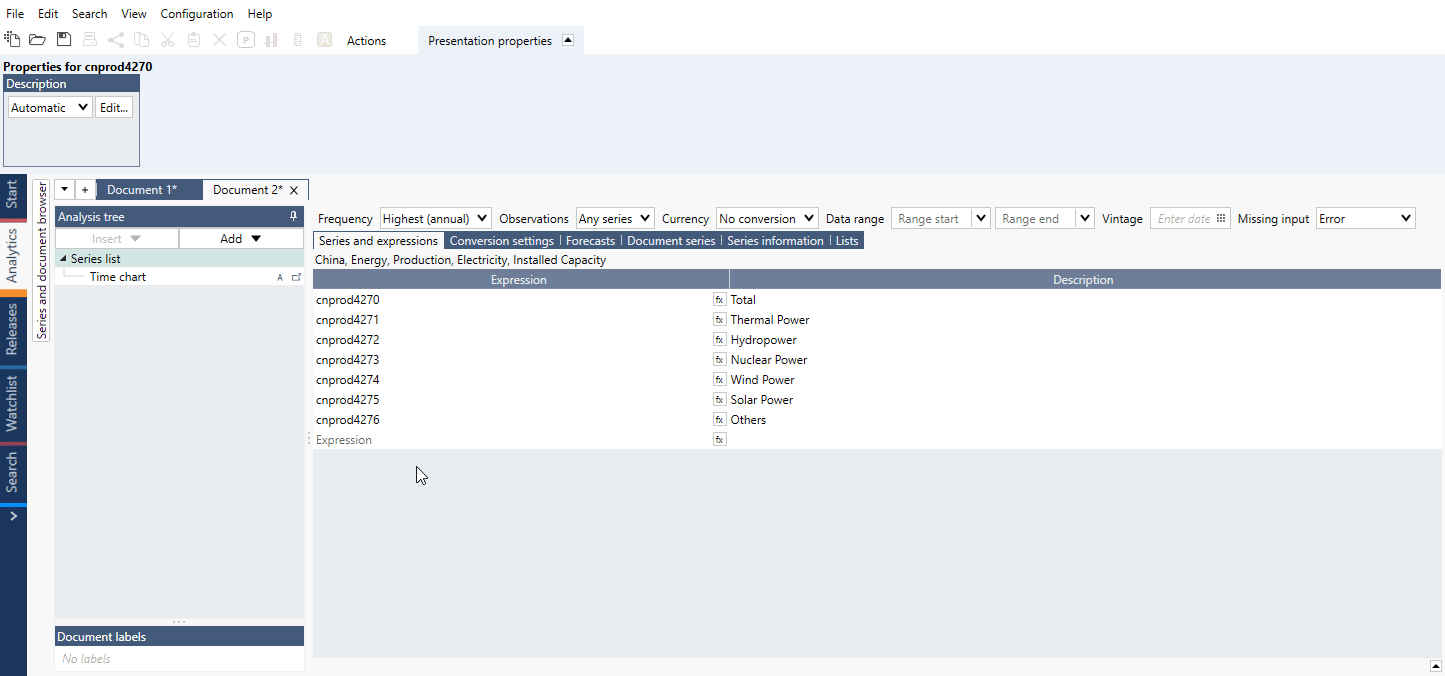Overview
Example of general use of Arithmetic analysis calculating percentage of Total series:

The Arithmetic analysis can be used to create ratios between series, express series as percentage of another series, or to calculate spreads.
The Arithmetic analysis allows you to perform simple operations on time series. You can add, divide, multiply and subtract series together or/and with any value as operand. The main benefit of the Arithmetic analysis is that you can easily apply the same operation to multiple series at once, with the Fill down button.
Settings
The analysis is divided into two blocks:
- operations with another series (the first two columns) – here you select the type of calculation and then the series to use (series operand).
- operations with values (last two columns) – you select the type of operation and the value you want to use.
Alternative solutions
However, with Arithmetic you can only perform operations with one other series at a time. If your calculation involves multiple series, using the formula language is a faster process. If you want to add more than two series together, we then recommend using the Cross Section analysis.
Example
In this example, we used the Arithmetic analysis to calculate the spread between Baa and Aaa corporate benchmarks for the US. We then multiplied the spread by 100 to express it in basis points.
Questions
How to calculate a spread?
There are two main possibilities to subtract one series from another:
- In Arithmetic analysis:
Choose 'Subtract' from the first operation field.
NOTE: The series on the left side will be used for the calculation and won’t be available in the later parts of analysis tree.
- With formula:
You can simply use the ' - ' (minus sign) operand in the formula language.
For more information about Formula language see: Formula